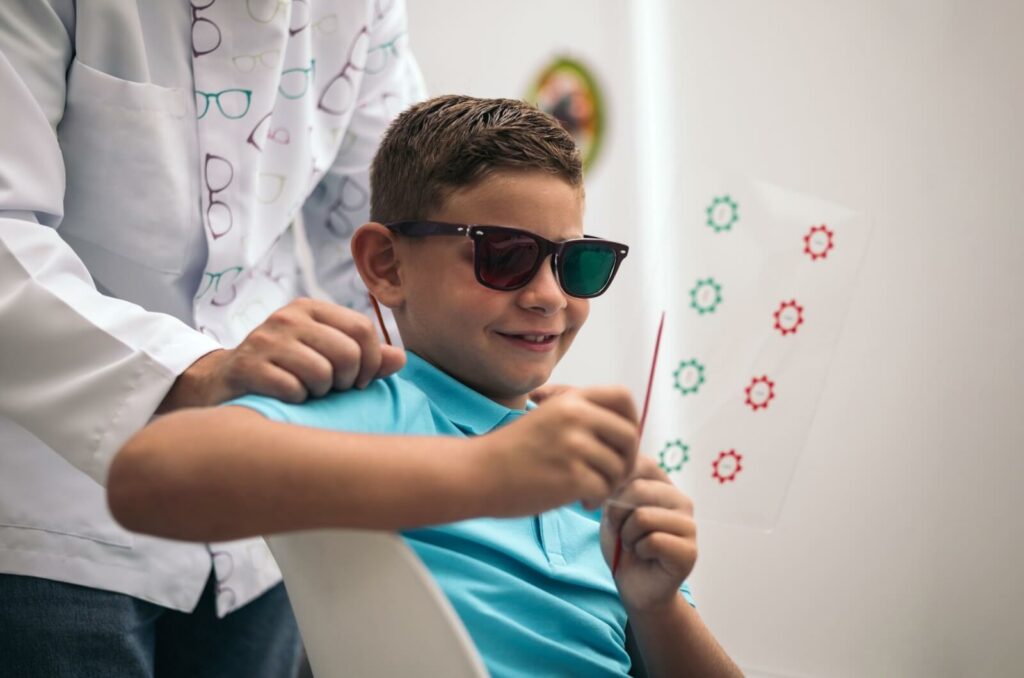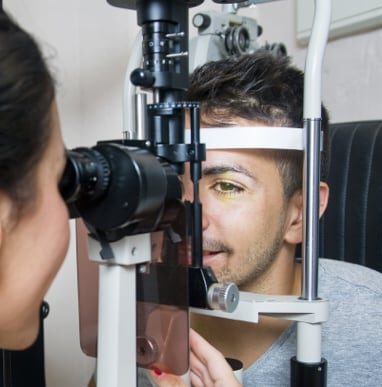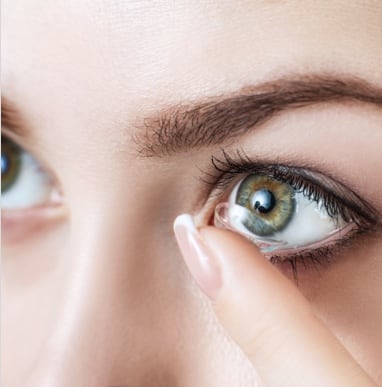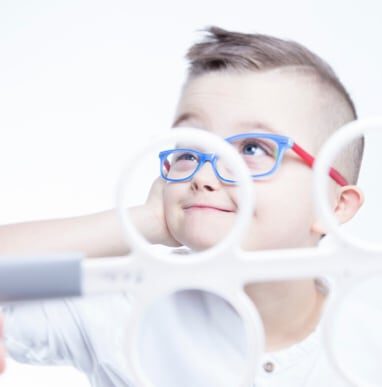Eye conditions can manifest in many forms, one of which is crossed eyes. Also known as strabismus, this condition develops when the eyes cannot work together effectively, causing one eye to misalign and turn in another direction.
While this condition primarily impacts children, adults can develop strabismus as well.
While there are several treatment options available for strabismus, vision therapy is an effective and non-invasive way to manage and treat this condition. Vision therapy focuses on using specialized exercises, tools, and activities to help improve visual skills by teaching the eyes how to work together more efficiently.
What is Strabismus?
Strabismus is an eye condition that occurs when the muscles controlling the eye’s movement don’t work harmoniously, resulting in eye misalignment. When the eyes are misaligned, they may point in different directions.
Strabismus is a relatively common eye condition that affects roughly 5% of the population and is frequently diagnosed in children. It can, however, develop at any age.
Certain risk factors increase one’s likelihood of developing strabismus:
- Family history of strabismus
- Premature birth
- History of eye injuries
- Vision impairment affecting one or both eyes
- Developmental delays or conditions affecting eye muscles
- Existing high hyperopia (farsightedness) that is uncorrected
This condition significantly affects vision by disrupting binocular vision, our ability to use both eyes together. When the eyes are misaligned, the brain receives conflicting images, often leading to double vision or the suppression of one eye’s visual input.
Over time, the brain may adapt by ignoring input from the misaligned eye, thereby increasing the risk of developing amblyopia, or lazy eye, where one eye becomes weaker than the other.
As such, leaving strabismus untreated can reduce depth perception and the ability to see in three dimensions, making everyday tasks like reading, driving, or activities more challenging.
The symptoms of strabismus can vary widely depending on the severity and type of the condition:
- Crossed or misaligned eyes that turn inward, outward, upward, or downward.
- Double vision
- Difficulty focusing
- Frequently squinting or closing one eye
- Eye strain
- Headaches
- Problems with depth perception
Early intervention is key for correcting strabismus, which can be diagnosed during a routine eye exam. Annual eye exams are encouraged for everyone, regardless of age or health status. These exams are especially important for children, whose eyes are still growing and developing.
All About Vision Therapy
Vision therapy is a specialized program aiming to improve visual skills and processing by strengthening brain-eye communication to teach the eyes how to work together more efficiently.
Some common eye conditions that vision therapy can target and improve include:
- Strabismus (Crossed eyes)
- Amblyopia (Lazy eye)
- Eye strain
- Double vision
- Convergence insufficiency (eye teaming)
Vision therapy works based on the understanding that vision isn’t innate, but rather is a learned skill, like riding a bike or playing an instrument. Vision is dynamic. It’s not just about seeing, but also about interpreting and responding to what is seen.
This means that visual deficiencies can sometimes be overcome by learning and targeting specific skills in order to improve vision.
Through repetitive exercises, tools, and gradually more challenging tasks, vision therapy rewires the brain-eye connection by taking advantage of neuroplasticity, the brain’s ability to form new neural connections. This makes vision more efficient.

During visual therapy, visual exercises and tools are used to target brain-eye communication by realigning and strengthening our eye muscles with the aim of improving:
- Accommodation
- Binocularity
- Depth perception
- Eye tracking
- Eye coordination
- Focus adjustment
Children are commonly recommended for vision therapy because their developing brains are more adaptable to change, but it’s not an age-restricted program. Adults struggling with specific vision conditions can benefit too.
The goal of vision therapy is to enhance visual efficiency by improving an individual’s ability to focus, track, and process visual information.
Correcting Strabismus with Vision Therapy
Vision therapy is an effective, non-invasive treatment option for managing or curing strabismus. It involves the development of a treatment program tailored to address a patient’s unique visual concerns. Exercises, activities, and tools are adjusted throughout the treatment based on the progression and challenges of each patient.
Children often experience significant results through vision therapy because their eyes and brains are still developing and are therefore most plastic or adaptable. However, adults can also benefit, though the process might take longer.
In adults, or for those with severe strabismus, vision therapy is often combined with other treatments such as corrective lenses, prism glasses, or surgery in order to improve results.
However, everyone experiences strabismus differently. The effectiveness of vision therapy depends on factors like the severity of the condition, the age of the patient, the patient’s commitment to the program, and their overall health status.
A typical program lasts an average of 25 weeks, or roughly six months, with regular weekly sessions. Vision therapy isn’t meant to be ongoing. Instead, it continues until significant improvements are achieved and maintained.
Schedule a Consultation
Strabismus is a condition that can lead to serious visual complications and discomfort if left unmanaged. Fortunately, vision therapy is the most effective, non-surgical method to manage and cure strabismus.
The key to ideal results is starting vision therapy sooner rather than later. Our team is happy to provide our growing community access to this excellent treatment.
Connect with our team at Vision Care Center to schedule a vision therapy consultation.












